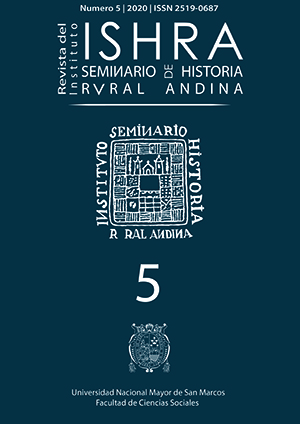The agricultural crisis in the late 17th and early 18th centuries in Lima and central Perú: Historiographical method for understanding climate change in the Andes
DOI:
https://doi.org/10.15381/ishra.v0i5.18065Keywords:
Agricultural crisis, little Ice Age, climate change, ENSO, PeruAbstract
From late 17th century to late 18th century, Peru, and especially its central area, underwent several transformations that affected agricultural economic activities due to changes caused by the ending of the Little Ice Age and the beginning of global warming. From the theoretical and methodological perspective of the History of Climate, in this article we seek to contribute to interpretations of the mechanisms and responses of communities to the changes occurred in this period of Peru’s history. The article presents some of the progress in the construction of series of quantitative indicators such as religious manifestations, prices of agricultural products, prices of services, and temperature measurements, which demonstrate the climate change produced throughout the 17th and 18th centuries.
Downloads
Downloads
Published
Issue
Section
License
Copyright (c) 2020 Carlos Carcelén Reluz, Miller Molina Gutiérrez, Víctor Andrés Medina

This work is licensed under a Creative Commons Attribution-NonCommercial-ShareAlike 4.0 International License.
AUTHORS RETAIN THEIR RIGHTS:
a. Authors retain their trade mark rights and patent, and also on any process or procedure described in the article.
b. Authors retain their right to share, copy, distribute, perform and publicly communicate their article (eg, to place their article in an institutional repository or publish it in a book), with an acknowledgment of its initial publication in the ISHRA, Revista del Instituto Seminario de Historia Rural Andina.
c. Authors retain theirs right to make a subsequent publication of their work, to use the article or any part thereof (eg a compilation of his papers, lecture notes, thesis, or a book), always indicating the source of publication (the originator of the work, journal, volume, number and date).
















